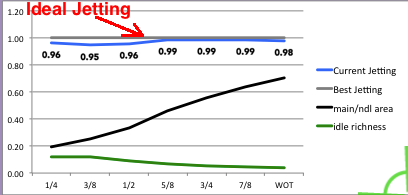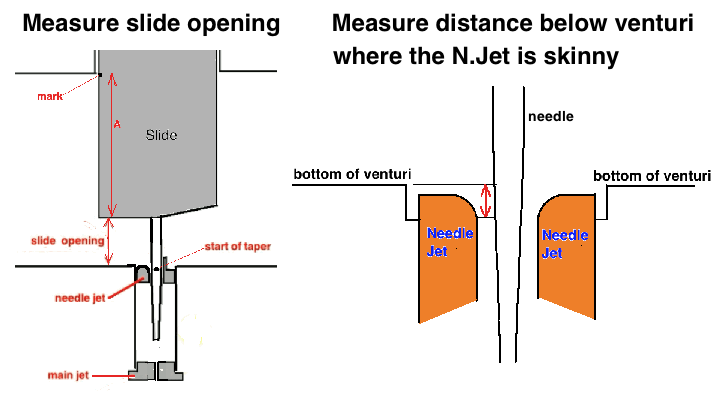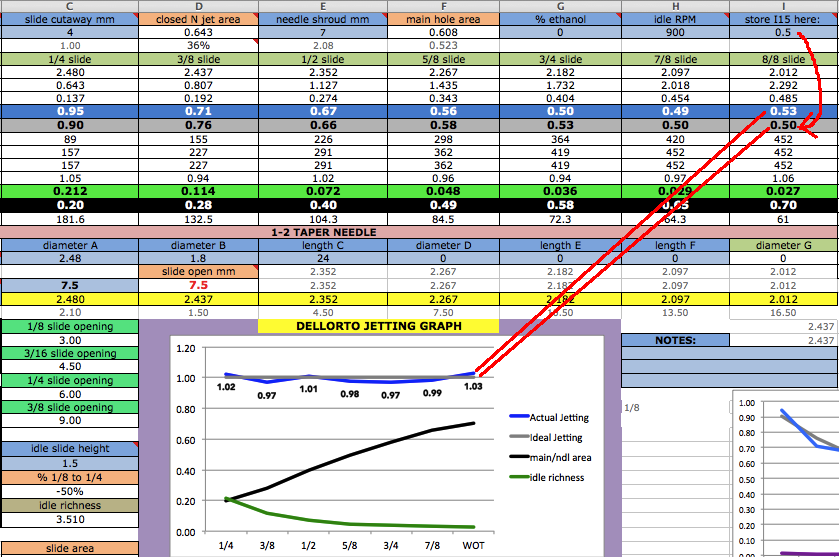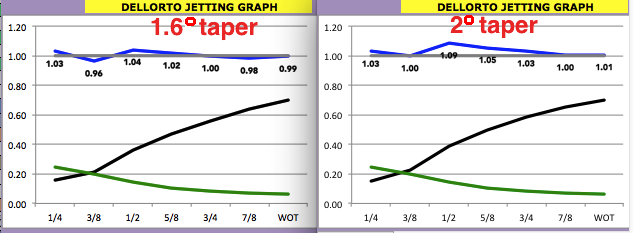Jetting Old Carburetors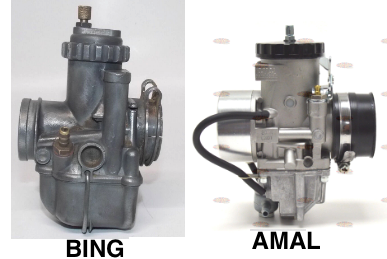 Below is a screenshot of my spreadsheet for jetting old carbs. Here's how to use the spreadsheet: Enter data into all the light blue cells of the spreadsheet. If you hover the mouse pointer over a cell with a red corner then a message will pop up telling you about that cell. 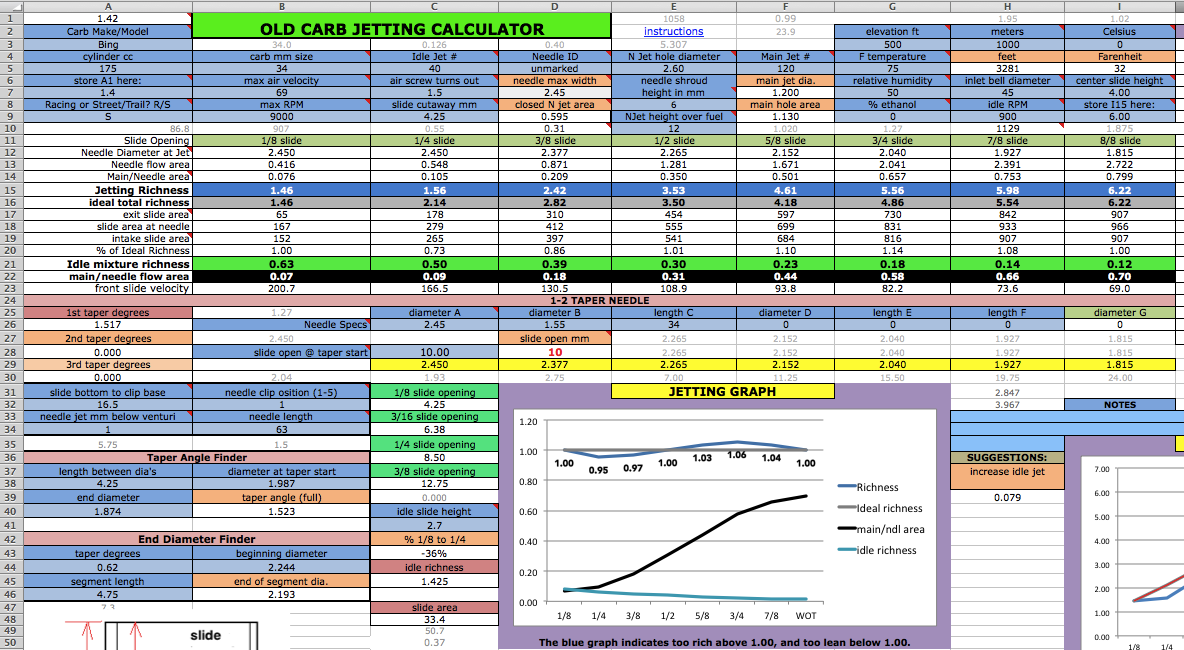 Here's the sequence to follow: 1) First make sure your real life idle jet size is correct. Turn in the slide stop screw till you have a slightly fast idle. Then slowly turn the air screw till you find where it idles the fastest, then readjust the slide stop for the same fast idle as before if it has changed. Then slowly turn clockwise the air screw till the idle speed starts to drop off due to starting to be too rich (but which is good for starting w/o the choke in warm weather). This should result to be within 1 to 2 turns out. (Forget the untrue 1.5 turn "rule" which never came from the carb manufacturers.) If it is less than 1 turn then you need a bigger idle jet. If it is more than 2 turns then you need a smaller idle jet. Install the correct idle jet if necessary and repeat procedure, adjusting the idle air screw. Then turn the slide stop screw till you have a normal idle speed. The right idle jet is what gives these two things: 1) the most consistent idling when the engine is hot, 2) the best off-idle power as you open the throttle slowly. Later you can change the slide stop position, idle jet, and air screw setting to your own preference, the best example being that racers let the slide low enough for engine braking that is too low to allow the engine to idle. Normally if you have to make the idle mixture too rich for smooth idling in order to help compensate for weak throttle response as you crack the throttle open then you either have the needle clip in too high a position (lowered needle), the needle is too fat, or the needle jet (the brass hole the needle slides into) is too narrow. 2) Make sure your main jet is correct. The simplest method is to try a few jets and pick the richest one that allows clean WOT running. Click here to find out the best way to size the main jet. For small carbs you may need to cut down the needle shroud if one main jet size is too rich and the next smaller size is too lean. In that case put in the rich jet and then lower the shroud .5mm (.02") at a time till the jetting is right. [Plug Reading]
3) Go to the last sheet (click on the velocity tab at the bottom left of the screen) to find out the maximum air velocity to enter at B7. If you aren't sure of the transfers duration then enter 125-130 for race engines or 115-120 for street/trail engines. It is best to measure the idle slide height but for "close" results you can just use the calculated value. Go to the last sheet (click on the velocity tab at the bottom left of the screen) to find out the maximum air velocity to enter at B7. If you aren't sure of the transfers duration then enter 125-130 for race engines or 115-120 for street/trail engines. 
You'll need to set the slide stop screw for an even engine idle and then take the carb off and measure the idle slide height for C41 of the Dellorto sheet. That is hard to do and so I made a mini calculator on the 1st Mikuni sheet, N15 to O27, that allows you to use two allen wrenches, one of a size smaller than the slide open mm, and one larger than that to calculate what the slide opening is according to the turns out of the slide stop screw. 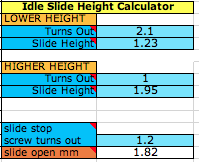  4) At C26 to G26 enter the data for your needle (obtained by measuring the needle with a digital caliper) and the program calculates the needle diameter for every 1/8th distance of the carb bore. If it is a single tapered needle then the dimensions are just A, B, and C. 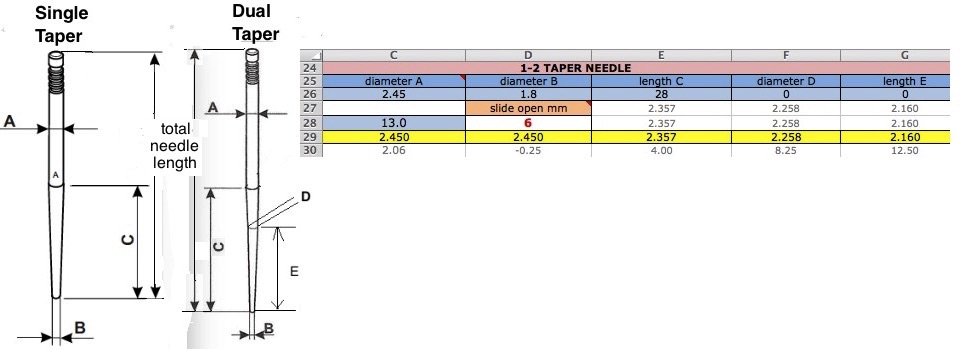 5) If you aren't sure of the needle jet (atomizer) hole diameter then you may have to measure the hole size. 
 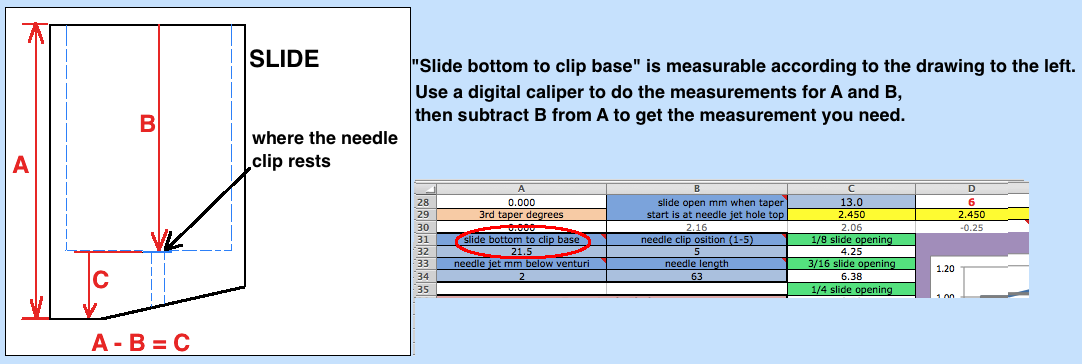
If the beginning graph is off from reality (blue too high or too low) then change the # at A7 to make it represent what you are feeling when reving and riding it. This will compensate for any bad measurements you've made or the idle circuit design varying from what is expected by the formulas.

11) Re-record this spreadsheet with all of your data in it. For example, if saving data for a CZ250 then save it as JettingCalcCZ250.xlsm  If you have any questions then just email me at a57ngel@yahoo.com |
